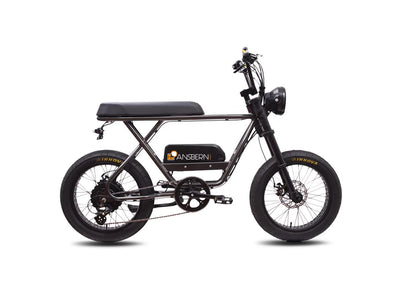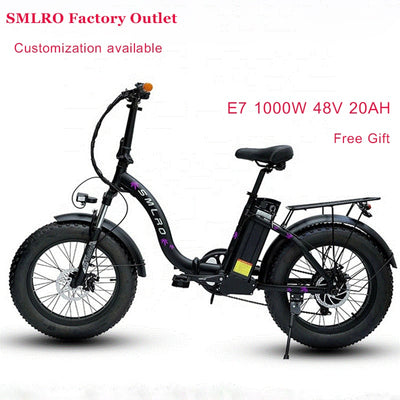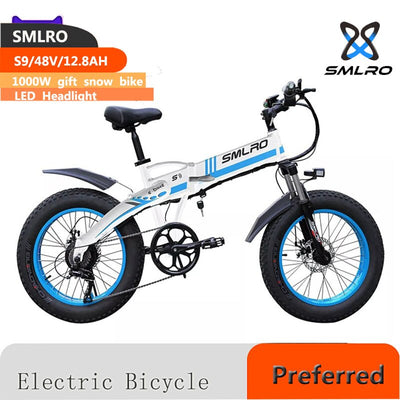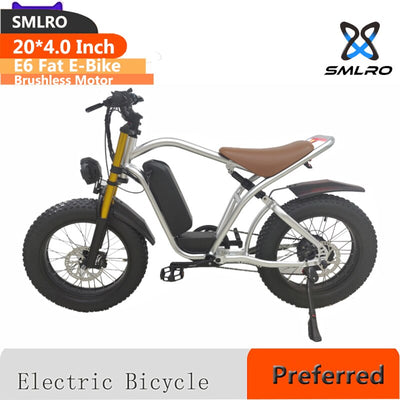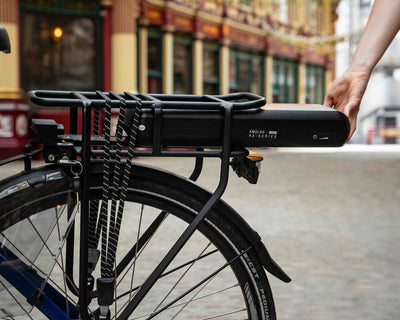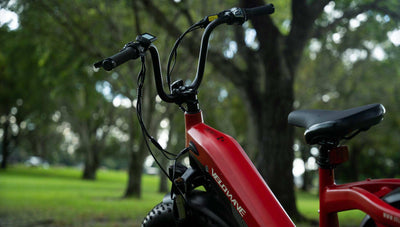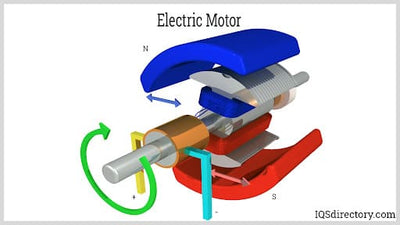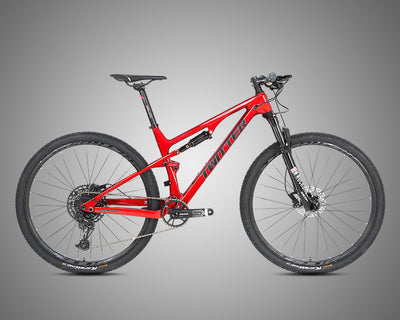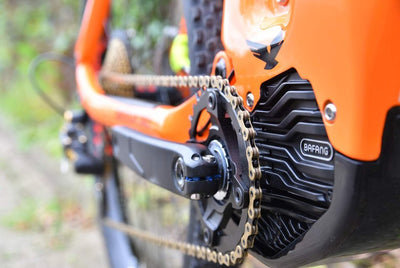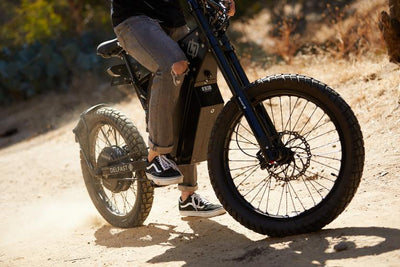STATE ELECTRIC BIKE LAWS AND REGULATIONS: STATE BY STATE
Posted by Tom Lee on
Each state has different electric bicycle laws and regulations. In order to let you understand each state's laws and regulations more clearly, we have refined each state's laws and regulations.
ALABAMA
- Electric bicycles are not subject to the registration, licensing, or insurance requirements that apply to motor vehicles.
- There are three classes of electric bikes:
-Class 1: Bicycles equipped with a motor only provide power when pedaling and stop providing power when the electric bicycle reaches 20 mph.
-Class 2: Bicycle equipped with a throttle-actuated motor that stops providing power when the electric bicycle reaches 20 mph.
-Class 3: Bicycles equipped with a motor only provide power when pedaling and stop providing power when the electric bicycle reaches 28 mph. - Regulations for Class 3 Electric bicycle:
-Persons under 16 years of age may not ride but can be a passenger.
-Riding with a helmet is required. - Persons under 16 years of age must wear a helmet on Class 1 & 2 electric bicycles.
ALASKA
- E-bike riders must carry an operator’s license.
- E-bikes are not subject to registration or insurance requirements.
- Helmets are not required.
- Persons over 14 years of age to use e-bike is required.
- E-bike are not allowed on sidewalks and bike paths.
ARIZONA
- E-bikes are not subject to the registration, licensing, or insurance requirements that apply to motor vehicles.
- There are three classes of electric bikes:
-Class 1: Bicycles equipped with a motor only provide power when pedaling and stop providing power when the electric bicycle reaches 20 mph.
-Class 2: Bicycle equipped with a throttle-actuated motor that stops providing power when the electric bicycle reaches 20 mph.
-Class 3: Bicycles equipped with a motor only provide power when pedaling and stop providing power when the electric bicycle reaches 28 mph. - Helmets are not required.
- No age-limit for e-bike use.
- E-bikes are allowed on sidewalks and bike paths.
ARKANSAS
- E-bikes are not subject to the registration, licensing, or insurance requirements that apply to motor vehicles.
- There are three classes of electric bikes:
-Class 1: Bicycles equipped with a motor only provide power when pedaling and stop providing power when the electric bicycle reaches 20 mph.
-Class 2: Bicycle equipped with a throttle-actuated motor that stops providing power when the electric bicycle reaches 20 mph.
-Class 3: Bicycles equipped with a motor only provide power when pedaling and stop providing power when the electric bicycle reaches 28 mph. - Regulations for Class 3 Electric bicycle:
-Persons under 16 years of age may not ride.
-Helmets are required for riders under 21 years of age.
CALIFORNIA
- Electric bicycles are not subject to the registration, licensing, or insurance requirements that apply to motor vehicles.
- There are three classes of electric bikes:
-Class 1: Bicycles equipped with a motor only provide power when pedaling and stop providing power when the electric bicycle reaches 20 mph.
-Class 2: Bicycle equipped with a throttle-actuated motor that stops providing power when the electric bicycle reaches 20 mph.
-Class 3: Bicycles equipped with a motor only provide power when pedaling and stop providing power when the electric bicycle reaches 28 mph. - Regulations for Class 3 Electric bicycle:
-Persons under 16 years of age may not ride but can be a passenger.
-Riding with a helmet is required.
COLORADO
- E-bikes are not subject to the registration, licensing, or insurance requirements that apply to motor vehicles.
- There are three classes of electric bikes:
-Class 1: Bicycles equipped with a motor only provide power when pedaling and stop providing power when the electric bicycle reaches 20 mph.
-Class 2: Bicycle equipped with a throttle-actuated motor that stops providing power when the electric bicycle reaches 20 mph.
-Class 3: Bicycles equipped with a motor only provide power when pedaling and stop providing power when the electric bicycle reaches 28 mph. - Regulations for Class 3 Electric bicycle:
-Persons under 16 years of age may not ride.
-Helmets are required for riders under 21 years of age.
CONNECTICUT
- E-bikes are not subject to the registration, licensing, or insurance requirements that apply to motor vehicles.
- There are three classes of electric bikes:
-Class 1: Bicycles equipped with a motor only provide power when pedaling and stop providing power when the electric bicycle reaches 20 mph.
-Class 2: Bicycle equipped with a throttle-actuated motor that stops providing power when the electric bicycle reaches 20 mph.
-Class 3: Bicycles equipped with a motor only provide power when pedaling and stop providing power when the electric bicycle reaches 28 mph. - Regulations for Class 3 Electric bicycle:
-Persons under 16 years of age may not ride but can be a passenger.
-Riding with a helmet is required.
-Not allowed on a bicycle trail or path or multi-use trail or path.
DELAWARE
- E-bike which motor is under 750w and a maximum speed of 20mph with pedal defined as a “bicycle”.
- E-bikes are not subject to the registration, licensing or insurance requirements that apply to motor vehicles.
- Helmets are required for riders and passengers under 18 year of age.
- There is no age minimum for e-bike use.
- E-bikes are allowed on sidewalks and bike paths.
FLORIDA
- E-bikes are not subject to the registration, licensing or insurance requirements that apply to motor vehicles.
- There are three classes of electric bikes:
-Class 1: Bicycles equipped with a motor only provide power when pedaling and stop providing power when the electric bicycle reaches 20 mph.
-Class 2: Bicycle equipped with a throttle-actuated motor that stops providing power when the electric bicycle reaches 20 mph.
-Class 3: Bicycles equipped with a motor only provide power when pedaling and stop providing power when the electric bicycle reaches 28 mph. - Helmets are required for riders and passengers under 16 year of age.
GEORGIA
- E-bikes are not subject to the registration, licensing or insurance requirements that apply to motor vehicles.
- There are three classes of electric bikes:
-Class 1: Bicycles equipped with a motor only provide power when pedaling and stop providing power when the electric bicycle reaches 20 mph.
-Class 2: Bicycle equipped with a throttle-actuated motor that stops providing power when the electric bicycle reaches 20 mph.
-Class 3: Bicycles equipped with a motor only provide power when pedaling and stop providing power when the electric bicycle reaches 28 mph. - Regulations for Class 3 Electric bicycle:
-Persons under 15 years of age may not ride but can be a passenger.
-Riding with a helmet is required.
-Not allowed on a bicycle path or shared use path unless it is within or adjacent to a highway or roadway, or they are specifically allowed by the local authority or state agency with jurisdiction.
HAWAII
- An E-bike powered solely by such a motor, is less than 20 mph.
- Owners are required to be registered and pay a fee of $30 at any city hall satellite location or the state business registration unit in Honolulu.
- Over 18 year of age is required for registration.
- Persons 15 years and older may operate an e-bike if it is registered to a household member.
- Helmets are required for anyone under the age of 16.

Photo by Velowave Electric Bike
IDAHO
- E-bikes are not subject to the registration, licensing or insurance requirements that apply to motor vehicles.
- There are three classes of electric bikes:
-Class 1: Bicycles equipped with a motor only provide power when pedaling and stop providing power when the electric bicycle reaches 20 mph.
-Class 2: Bicycle equipped with a throttle-actuated motor that stops providing power when the electric bicycle reaches 20 mph.
-Class 3: Bicycles equipped with a motor only provide power when pedaling and stop providing power when the electric bicycle reaches 28 mph.
ILLINOIS
- E-bikes are not subject to the registration, licensing, or insurance requirements that apply to motor vehicles.
- There are three classes of electric bikes:
-Class 1: Bicycles equipped with a motor only provide power when pedaling and stop providing power when the electric bicycle reaches 20 mph.
-Class 2: Bicycle equipped with a throttle-actuated motor that stops providing power when the electric bicycle reaches 20 mph.
-Class 3: Bicycles equipped with a motor only provide power when pedaling and stop providing power when the electric bicycle reaches 28 mph. - Regulations for Class 3 Electric bicycle:
-Persons under 16 years of age may not ride.
-Not allowed on sidewalks.
INDIANA
- E-bikes are not subject to the registration, licensing or insurance requirements that apply to motor vehicles.
- There are three classes of electric bikes:
-Class 1: Bicycles equipped with a motor only provide power when pedaling and stop providing power when the electric bicycle reaches 20 mph.
-Class 2: Bicycle equipped with a throttle-actuated motor that stops providing power when the electric bicycle reaches 20 mph.
-Class 3: Bicycles equipped with a motor only provide power when pedaling and stop providing power when the electric bicycle reaches 28 mph. - Regulations for Class 3 Electric bicycle:
-Persons under 15 years of age may not ride but can be a passenger.
-Riding with a helmet is required for the age under 18.
-Not allowed on a bicycle path or multipath unless it is within or adjacent to a highway or roadway, or they are specifically allowed by the local authority or state agency with jurisdiction.
IOWA
- Electric bicycles are not subject to the registration, licensing, or insurance requirements that apply to motor vehicles.
- There are three classes of electric bikes:
-Class 1: Bicycles equipped with a motor only provide power when pedaling and stop providing power when the electric bicycle reaches 20 mph.
-Class 2: Bicycle equipped with a throttle-actuated motor that stops providing power when the electric bicycle reaches 20 mph.
-Class 3: Bicycles equipped with a motor only provide power when pedaling and stop providing power when the electric bicycle reaches 28 mph. - Regulations for Class 3 Electric bicycle:
-Persons under 16 years of age may not ride but can be a passenger.
-Riding on bicycle or multi-use paths must not exceed the posted speed limit, or if there is no posted speed limit, 20 miles per hour.
KANSAS
- An e-bike is defined as an “electric assisted bicycle,” so long as the e-bike motor is under 1,000w, has a maximum speed of 20mph and has operable pedals.
- E-bikes are not subject to the registration, licensing or insurance requirements that apply to motor vehicles.
- Helmets are not required and there is no age minimum for e-bike use.
KENTUCKY
- E-bikes are not subject to the registration, licensing or insurance requirements that apply to motor vehicles.
- Helmets are not required.
- No age minimum for e-bike use.
LOUISIANA
- E-bikes are not subject to the registration, licensing or insurance requirements that apply to motor vehicles.
- There are three classes of electric bikes:
-Class 1: Bicycles equipped with a motor only provide power when pedaling and stop providing power when the electric bicycle reaches 20 mph.
-Class 2: Bicycle equipped with a throttle-actuated motor that stops providing power when the electric bicycle reaches 20 mph.
-Class 3: Bicycles equipped with a motor only provide power when pedaling and stop providing power when the electric bicycle reaches 28 mph. - Regulations for Class 3 Electric bicycle:
-Persons under 12 years of age may not ride but can be a passenger.
-Helmets are required.
MAINE
- E-bikes are not subject to the registration, licensing or insurance requirements that apply to motor vehicles.
- There are three classes of electric bikes:
-Class 1: Bicycles equipped with a motor only provide power when pedaling and stop providing power when the electric bicycle reaches 20 mph.
-Class 2: Bicycle equipped with a throttle-actuated motor that stops providing power when the electric bicycle reaches 20 mph.
-Class 3: Bicycles equipped with a motor only provide power when pedaling and stop providing power when the electric bicycle reaches 28 mph. - Regulations for Class 3 Electric bicycle:
-May not be operated on a bike path unless it is within a highway or roadway or allowed by the local authority.
-Helmets are required for riders or passengers under 16 years of age.
-Persons under 16 years of age may not ride Class 2 & Class 3 but can be a passenger.
MARYLAND
- E-bikes are not subject to the registration, licensing or insurance requirements that apply to motor vehicles.
- There are three classes of electric bikes:
-Class 1: Bicycles equipped with a motor only provide power when pedaling and stop providing power when the electric bicycle reaches 20 mph.
-Class 2: Bicycle equipped with a throttle-actuated motor that stops providing power when the electric bicycle reaches 20 mph.
-Class 3: Bicycles equipped with a motor only provide power when pedaling and stop providing power when the electric bicycle reaches 28 mph. - Regulations for Class 3 Electric bicycle:
-Persons under 16 years of age may not ride but can be a passenger.
-Not allowed on a bicycle path unless it is adjacent to a highway or right-of-way, or they are specifically allowed by the local authority or state agency with jurisdiction.
-Not allowed on sidewalks
MASSACHUSETTS
- An e-bike is defined as a “motorized bicycle” as long as its maximum speed is 25mph.
- Riders must carry an operator’s license and are subject to registration requirements.
- Not subject to insurance requirements.
- Helmets are required.
- Persons under 16 years of age may not use e-bikes.
- Not allowed on sidewalks or bike paths.
MICHIGAN
- E-bikes are not subject to the registration, licensing, or insurance requirements that apply to motor vehicles.
- There are three classes of electric bikes:
-Class 1: Bicycles equipped with a motor only provide power when pedaling and stop providing power when the electric bicycle reaches 20 mph.
-Class 2: Bicycle equipped with a throttle-actuated motor that stops providing power when the electric bicycle reaches 20 mph.
-Class 3: Bicycles equipped with a motor only provide power when pedaling and stop providing power when the electric bicycle reaches 28 mph. - Only class 1 e-bikes are allowed on bike paths and linear trails.
- Regulations for Class 3 Electric bicycle:
-Persons under 14 years of age may not ride but can be a passenger.
-Helmets are required for ages under 18.
-A permit is required to ride within the Mackinac Island State Park.
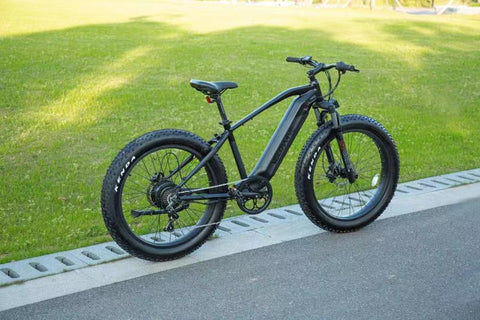
Photo by Velowave Electric Bike
MINNESOTA
- Electric bicycles are not subject to the registration, licensing, or insurance requirements that apply to motor vehicles.
- There are three classes of electric bikes:
-Class 1: Bicycles equipped with a motor only provide power when pedaling and stop providing power when the electric bicycle reaches 20 mph.
-Class 2: Bicycle equipped with a throttle-actuated motor that stops providing power when the electric bicycle reaches 20 mph.
-Class 3: Bicycles equipped with a motor only provide power when pedaling and stop providing power when the electric bicycle reaches 28 mph. - Persons under 15 years of age may not ride but can be a passenger.
MISSISSIPPI
- Electric bicycles are not subject to the registration, licensing, or insurance requirements that apply to motor vehicles.
- There are three classes of electric bikes:
-Class 1: Bicycles equipped with a motor only provide power when pedaling and stop providing power when the electric bicycle reaches 20 mph.
-Class 2: Bicycle equipped with a throttle-actuated motor that stops providing power when the electric bicycle reaches 20 mph.
-Class 3: Bicycles equipped with a motor only provide power when pedaling and stop providing power when the electric bicycle reaches 28 mph. - Regulations for Class 3 Electric bicycle:
-Persons under 16 years of age may not ride but can be a passenger.
MISSOURI
- Electric bicycles are not subject to the registration, licensing, or insurance requirements that apply to motor vehicles.
- There are three classes of electric bikes:
-Class 1: Bicycles equipped with a motor only provide power when pedaling and stop providing power when the electric bicycle reaches 20 mph.
-Class 2: Bicycle equipped with a throttle-actuated motor that stops providing power when the electric bicycle reaches 20 mph.
-Class 3: Bicycles equipped with a motor only provide power when pedaling and stop providing power when the electric bicycle reaches 28 mph. - Regulations for Class 3 Electric bicycle:
-Persons under 16 years of age may not ride but can be a passenger.
MONTANA
- An e-bike is defined as an “electrically assisted bicycle” as long as its maximum speed is 20mph.
- E-bikes are not subject to the registration, licensing or insurance requirements that apply to motor vehicles.
- Helmets are not required.
- No age minimum for e-bike use.
NEBRASKA
- An e-bike is defined as an “electrically assisted bicycle” as long as the e-bike motor is under 750w, has a maximum speed of 20mph, and has fully operable pedals.
- E-bikes are not subject to the registration, licensing or insurance requirements that apply to motor vehicles.
- Helmets are not required.
- No age minimum for e-bike use.
NEVADA
- Electric bicycles are not subject to the registration, licensing, or insurance requirements that apply to motor vehicles.
- There are three classes of electric bikes:
-Class 1: Bicycles equipped with a motor only provide power when pedaling and stop providing power when the electric bicycle reaches 20 mph.
-Class 2: Bicycle equipped with a throttle-actuated motor that stops providing power when the electric bicycle reaches 20 mph.
-Class 3: Bicycles equipped with a motor only provide power when pedaling and stop providing power when the electric bicycle reaches 28 mph.
NEW HAMPSHIRE
- E-bikes are not subject to the registration, licensing or insurance requirements that apply to motor vehicles.
- There are three classes of electric bikes:
-Class 1: Bicycles equipped with a motor only provide power when pedaling and stop providing power when the electric bicycle reaches 20 mph.
-Class 2: Bicycle equipped with a throttle-actuated motor that stops providing power when the electric bicycle reaches 20 mph.
-Class 3: Bicycles equipped with a motor only provide power when pedaling and stop providing power when the electric bicycle reaches 28 mph. - A Class 1 or Class 2 e-bike may be ridden on bicycle or multi-use paths.
- Regulations for Class 3 Electric bicycle:
-Persons under 16 years of age may not ride but can be a passenger.
-Helmets are required for ages under 18.
-Only allowed on the roadway.
NEW JERSEY
- There are three classes of electric bikes:
-Class 1: Bicycles equipped with a motor only provide power when pedaling and stop providing power when the electric bicycle reaches 20 mph.
-Class 2: Bicycle equipped with a throttle-actuated motor that stops providing power when the electric bicycle reaches 20 mph.
-Class 3: Bicycles equipped with a motor only provide power when pedaling and stop providing power when the electric bicycle reaches 28 mph. - Class 1 and 2 e-bikes are regulated like bicycles.
- Class 1 and 2 e-bikes are not subject to the registration, licensing or insurance requirements that apply to motor vehicles.
- Regulations for Class 3 Electric bicycle:
-Defined as motorized bicycles, riders must carry an operator’s license and are subject to registration and insurance requirements.
-There is a 15 year age minimum for motorized bicycle use.
NEW MEXICO
- E-bikes are subject to the licensing and insurance requirements that apply to motor vehicles.
- The minimum user age is 15 years of age.
- Not allowed on sidewalks.
NEW YORK
- E-bikes are not subject to the registration, licensing or insurance requirements that apply to motor vehicles.
- There are three classes of electric bikes:
-Class 1: Bicycles equipped with a motor only provide power when pedaling and stop providing power when the electric bicycle reaches 20 mph.
-Class 2: Bicycle equipped with a throttle-actuated motor that stops providing power when the electric bicycle reaches 20 mph.
-Class 3: Bicycles equipped with a motor only provide power when pedaling and stop providing power when the electric bicycle reaches 25 mph. - Regulations for Class 1 and Class 2 e-bikes:
-Have access on roads with speed limits of 30 mph or less, including bike lanes.
-Have access on some bike paths that are connected with or adjacent to roads.
-May carry passengers.
-Must ride single file.
NORTH CAROLINA
- E-bike which motor is under 750w and a maximum speed of 20mph with pedal defined as a “bicycle”.
- E-bikes are not subject to the registration, licensing, or insurance requirements that apply to motor vehicles.
- Helmets are not required.
- Persons over 16 years of age to use e-bike is required.
- E-bike are allowed on sidewalks if bicycles are allowed.
NORTH DAKOTA
- Electric bicycles are not subject to the registration, licensing, or insurance requirements that apply to motor vehicles.
- There are three classes of electric bikes:
-Class 1: Bicycles equipped with a motor only provide power when pedaling and stop providing power when the electric bicycle reaches 20 mph.
-Class 2: Bicycle equipped with a throttle-actuated motor that stops providing power when the electric bicycle reaches 20 mph.
-Class 3: Bicycles equipped with a motor only provide power when pedaling and stop providing power when the electric bicycle reaches 28 mph. - Regulations for Class 3 Electric bicycle:
-Helmets are required for ages under 18.
-Allowed on bicycle or multi-use paths.
OHIO
- E-bikes are not subject to the registration, licensing, or insurance requirements that apply to motor vehicles.
- There are three classes of electric bikes:
-Class 1: Bicycles equipped with a motor only provide power when pedaling and stop providing power when the electric bicycle reaches 20 mph.
-Class 2: Bicycle equipped with a throttle-actuated motor that stops providing power when the electric bicycle reaches 20 mph.
-Class 3: Bicycles equipped with a motor only provide power when pedaling and stop providing power when the electric bicycle reaches 28 mph. - Regulations for Class 3 Electric bicycle:
-Helmets are required.
-Allowed on bike paths.
OKLAHOMA
- E-bikes are not subject to the registration, licensing or insurance requirements that apply to motor vehicles.
- There are three classes of electric bikes:
-Class 1: Bicycles equipped with a motor only provide power when pedaling and stop providing power when the electric bicycle reaches 20 mph.
-Class 2: Bicycle equipped with a throttle-actuated motor that stops providing power when the electric bicycle reaches 20 mph.
-Class 3: Bicycles equipped with a motor only provide power when pedaling and stop providing power when the electric bicycle reaches 28 mph. - Regulations for Class 3 Electric bicycle:
-Not allowed on a bicycle trail or path or multi-use trail or path, unless it is adjacent to a highway or roadway, or they are specifically allowed by the local authority or state agency with jurisdiction.
-Persons under 16 years of age may not ride but can be a passenger.
OREGON
- An e-bike is defined as an “electrically assisted bicycle” as long as the e-bike motor is under 1000w, has a maximum speed of 20mph, and has fully operable pedals.
- E-bikes are not subject to the registration, licensing or insurance requirements that apply to motor vehicles.
- E-bikes are allowed on bike paths but are not allowed on sidewalks.
- The age minimum for e-bike riders is 16 years.
- Helmets are not required.
PENNSYLVANIA
- The e-bike motor is under 750w, has a maximum speed of 20mph on a level surface when powered by the motor source only, weighs no more than 100 lbs and has operable pedals.
- E-bikes are not subject to the registration, licensing or insurance requirements that apply to motor vehicles.
- Helmets are not required.
- No person under 16 years of age may operate an e-bike.
RHODE ISLAND
- The e-bike with a power output no greater than 1,491w, a maximum speed of 25mph and fully operable pedals.
- E-bike are not subject to the laws that apply to “motor vehicles.” E-bike are not required to be registered.
- E-bikes are subject to the rules of the road that apply to “vehicles.”
SOUTH CAROLINA
- An E-bike with a motor under 750w is not subject to the registration, licensing or insurance requirements that apply to motor vehicles.
SOUTH DAKOTA
- E-bikes are not subject to the registration, licensing or insurance requirements that apply to motor vehicles.
- There are three classes of electric bikes:
-Class 1: Bicycles equipped with a motor only provide power when pedaling and stop providing power when the electric bicycle reaches 20 mph.
-Class 2: Bicycle equipped with a throttle-actuated motor that stops providing power when the electric bicycle reaches 20 mph.
-Class 3: Bicycles equipped with a motor only provide power when pedaling and stop providing power when the electric bicycle reaches 28 mph. - Regulations for Class 3 Electric bicycle:
-Persons under 16 years of age may not ride, but can be a passenger.
-Not allowed on a bicycle trail or path or multi use trail or path, but are allowed to ride on the road.
TENNESSEE
- E-bikes are not subject to the registration, licensing or insurance requirements that apply to motor vehicles.
- There are three classes of electric bikes:
-Class 1: Bicycles equipped with a motor only provide power when pedaling and stop providing power when the electric bicycle reaches 20 mph.
-Class 2: Bicycle equipped with a throttle-actuated motor that stops providing power when the electric bicycle reaches 20 mph.
-Class 3: Bicycles equipped with a motor only provide power when pedaling and stop providing power when the electric bicycle reaches 28 mph. - Regulations for Class 3 Electric bicycle:
-Persons under 14 years of age may not ride.
-Riders and passengers are required to wear helmets.
-Have limited use of bicycle paths and are generally not permitted.
-E-bike are not allowed on sidewalks.
TEXAS
- E-bikes are not subject to the registration, licensing or insurance requirements that apply to motor vehicles.
- There are three classes of electric bikes:
-Class 1: Bicycles equipped with a motor only provide power when pedaling and stop providing power when the electric bicycle reaches 20 mph.
-Class 2: Bicycle equipped with a throttle-actuated motor that stops providing power when the electric bicycle reaches 20 mph.
-Class 3: Bicycles equipped with a motor only provide power when pedaling and stop providing power when the electric bicycle reaches 28 mph. - Regulations for Class 3 Electric bicycle:
-Persons under 15 years of age may not ride, but can be a passenger.
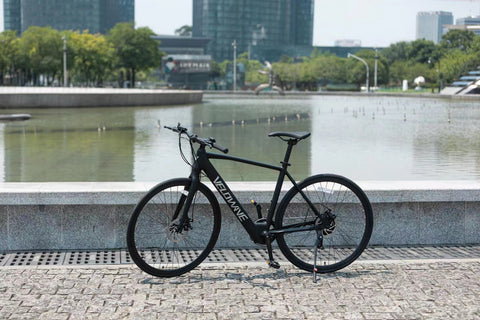
Photo by Velowave Electric Bike
UTAH
- E-bikes are not subject to the registration, licensing or insurance requirements that apply to motor vehicles.
- There are three classes of electric bikes:
-Class 1: Bicycles equipped with a motor only provide power when pedaling and stop providing power when the electric bicycle reaches 20 mph.
-Class 2: Bicycle equipped with a throttle-actuated motor that stops providing power when the electric bicycle reaches 20 mph.
-Class 3: Bicycles equipped with a motor only provide power when pedaling and stop providing power when the electric bicycle reaches 28 mph. - E-bikes are allowed on bike paths but not on sidewalks.
VERMONT
- Electric bicycles are not subject to the registration, licensing, or insurance requirements that apply to motor vehicles.
- There are three classes of electric bikes:
-Class 1: Bicycles equipped with a motor only provide power when pedaling and stop providing power when the electric bicycle reaches 20 mph.
-Class 2: Bicycle equipped with a throttle-actuated motor that stops providing power when the electric bicycle reaches 20 mph.
-Class 3: Bicycles equipped with a motor only provide power when pedaling and stop providing power when the electric bicycle reaches 28 mph. - Regulations for Class 3 Electric bicycle:
-Persons under 16 years of age may not ride, but can be a passenger.
VIRGINIA
- E-bikes are not subject to the registration, licensing or insurance requirements that apply to motor vehicles.
- There are three classes of electric bikes:
-Class 1: Bicycles equipped with a motor only provide power when pedaling and stop providing power when the electric bicycle reaches 20 mph.
-Class 2: Bicycle equipped with a throttle-actuated motor that stops providing power when the electric bicycle reaches 20 mph.
-Class 3: Bicycles equipped with a motor only provide power when pedaling and stop providing power when the electric bicycle reaches 28 mph. - Regulations for Class 3 Electric bicycle:
-Persons under 14 years of age may not ride.
-Riders and passengers are required to wear helmets.
- E-bikes are not subject to the registration, licensing, or insurance requirements that apply to motor vehicles.
- There are three classes of electric bikes:
-Class 1: Bicycles equipped with a motor only provide power when pedaling and stop providing power when the electric bicycle reaches 20 mph.
-Class 2: Bicycle equipped with a throttle-actuated motor that stops providing power when the electric bicycle reaches 20 mph.
-Class 3: Bicycles equipped with a motor only provide power when pedaling and stop providing power when the electric bicycle reaches 28 mph. - Regulations for Class 3 Electric bicycle:
-Not allowed on bike paths and improved trails.
-Persons under 16 years of age may not ride, but can be a passenger.
WASHINGTON D.C
- The e-bike has operable pedals, can be operated under combined human and motor power and has a maximum speed of 20 mph.
- E-bikes are not subject to the registration, licensing or insurance requirements that apply to motor vehicles.
- You must be 16 years or older to operate an e-bike.
WEST VIRGINIA
- E-bikes are not subject to the registration, licensing or insurance requirements that apply to motor vehicles.
- There are two classes of electric bikes:
-Class 1: Bicycles equipped with a motor only provide power when pedaling and stop providing power when the electric bicycle reaches 20 mph.
-Class 3: Bicycles equipped with a motor only provide power when pedaling and stop providing power when the electric bicycle reaches 28 mph. - Regulations for Class 3 Electric bicycle:
-Not allowed on bike paths, multi-use trails and single-use trails.
-Persons under 16 years of age may not ride.
-Passengers under the age of 15 must be on an e-bike driven by someone 18 years. - All operators and passengers under 15 years old must wear a helmet.
WISCONSIN
- E-bikes are not subject to the registration, licensing or insurance requirements that apply to motor vehicles.
- There are three classes of electric bikes:
-Class 1: Bicycles equipped with a motor only provide power when pedaling and stop providing power when the electric bicycle reaches 20 mph.
-Class 2: Bicycle equipped with a throttle-actuated motor that stops providing power when the electric bicycle reaches 20 mph.
-Class 3: Bicycles equipped with a motor only provide power when pedaling and stop providing power when the electric bicycle reaches 28 mph. - Regulations for Class 3 Electric bicycle:
-Persons under 16 years of age may not ride.
WYOMING
- E-bikes are not subject to the registration, licensing, or insurance requirements that apply to motor vehicles.
- There are three classes of electric bikes:
-Class 1: Bicycles equipped with a motor only provide power when pedaling and stop providing power when the electric bicycle reaches 20 mph.
-Class 2: Bicycle equipped with a throttle-actuated motor that stops providing power when the electric bicycle reaches 20 mph.
-Class 3: Bicycles equipped with a motor only provide power when pedaling and stop providing power when the electric bicycle reaches 28 mph.
Reference: https://www.peopleforbikes.org/electric-bikes/state-laws

